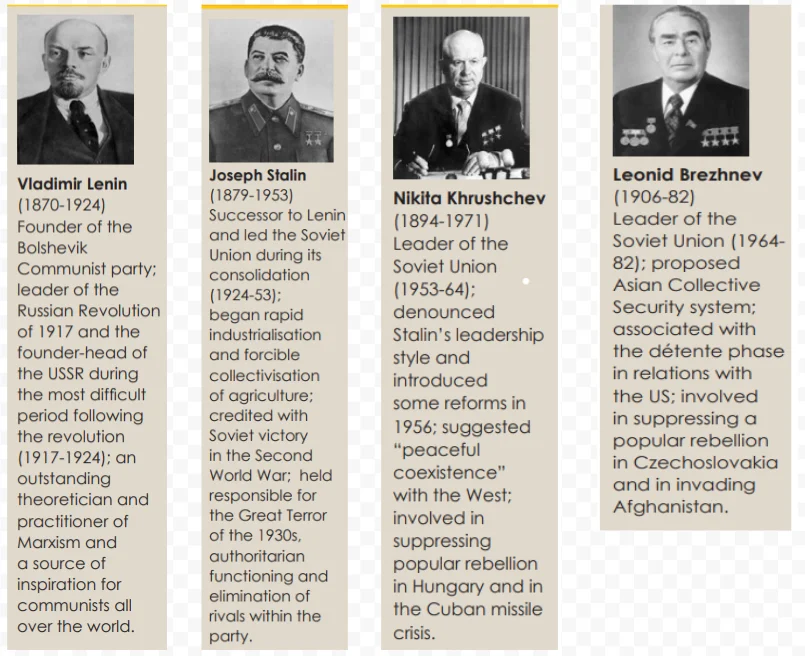![]() 22 Jul 2024
22 Jul 2024
In 1989, people brought down the Berlin Wall, which was constructed during the Cold War and symbolized its strength. The dramatic event was followed by a historic chain of events that ultimately led to the collapse of the ‘second world’ and end of the Cold War. Germany, which was split after World War II, was brought together. The Soviet Union remained passive as the Cold War came to a close, bringing an end not through military tactics but through widespread acts by regular citizens. In the end, the Soviet Union collapsed on its own.
The formation of the USSR occurred after the Socialist Revolution in Russia in 1917. The rebellion originated from socialist beliefs and the wish for an equitable society, in opposition to capitalism.

Soviet System: Mikhail Gorbachev, who had become General Secretary of Communist Party of Soviet Union in 1985, sought to reform this system.
Systemic Flaws and Public Dissatisfaction: The internal weaknesses of Soviet political and economic institutions, which failed to meet aspirations of people, were responsible for the collapse of the system.
End of Cold War: It meant the end of Cold War confrontations.
| Must Read | |
| Current Affairs | Editorial Analysis |
| Upsc Notes | Upsc Blogs |
| NCERT Notes | Free Main Answer Writing |
The end of the Soviet bloc meant the emergence of many new countries. All these countries had their independent aspirations and choices. Some of them, especially Baltic and East European states, wanted to join the European Union and become part of North Atlantic Treaty Organisation (NATO). Central Asian countries wanted to take advantage of their geographical location and continue their close ties with Russia and also to establish ties with West, the US, China, and others.
| Timeline and Events |
| 1985 March: Mikhail Gorbachev was elected as the General Secretary of the Communist Party of the Soviet Union; he appointed Boris Yeltsin as the head of the Communist Party in Moscow and initiated a series of reforms in the Soviet Union |
| 1988: The independence movement began in Lithuania and later spread to Estonia and Latvia. |
| 1989 October: Soviet Union declared that the Warsaw Pact members were free to decide their futures; Berlin Wall fell in November. |
| 1990 February: Gorbachev stripped the Soviet Communist Party of its 72-year-long monopoly on power by calling on the Soviet parliament (Duma) to permit multi-party politics. |
| 1990 March: Lithuania became the first of the 15 Soviet republics to declare its independence. |
| 1990 June: Russian parliament declared its independence from the Soviet Union. |
| 1991 June: Yeltsin who was no longer in the Communist Party, became the President of Russia. |
| 1991 August: The Communist Party hardliners staged an abortive coup against Gorbachev. |
| 1991 September: Three Baltic republics of Estonia, Latvia, and Lithuania became UN members and later joined NATO in March 2004. |
| 1991 December: Russia, Belarus, and Ukraine decided to annul the 1922 Treaty on the Creation of the USSR and establish the Commonwealth of Independent States (CIS); Armenia, Azerbaijan, Moldova, Kazakhstan, Kyrgyzstan, Tajikistan, Turkmenistan, and Uzbekistan joined the CIS (Georgia joined later in 1993); Russia took over the USSR seat in the United Nations. |
| 1991 December 25: Gorbachev resigned as the President of the Soviet Union; this marked the end of the Soviet Union. |
| Related Articles | |
| EUROPEAN UNION (EU) | Economy |
| causes behind the collapse of the Soviet Union | The Russian Revolution: From Tsarist Rule to Bolshevik Ascendancy |
<div class="new-fform">
</div>